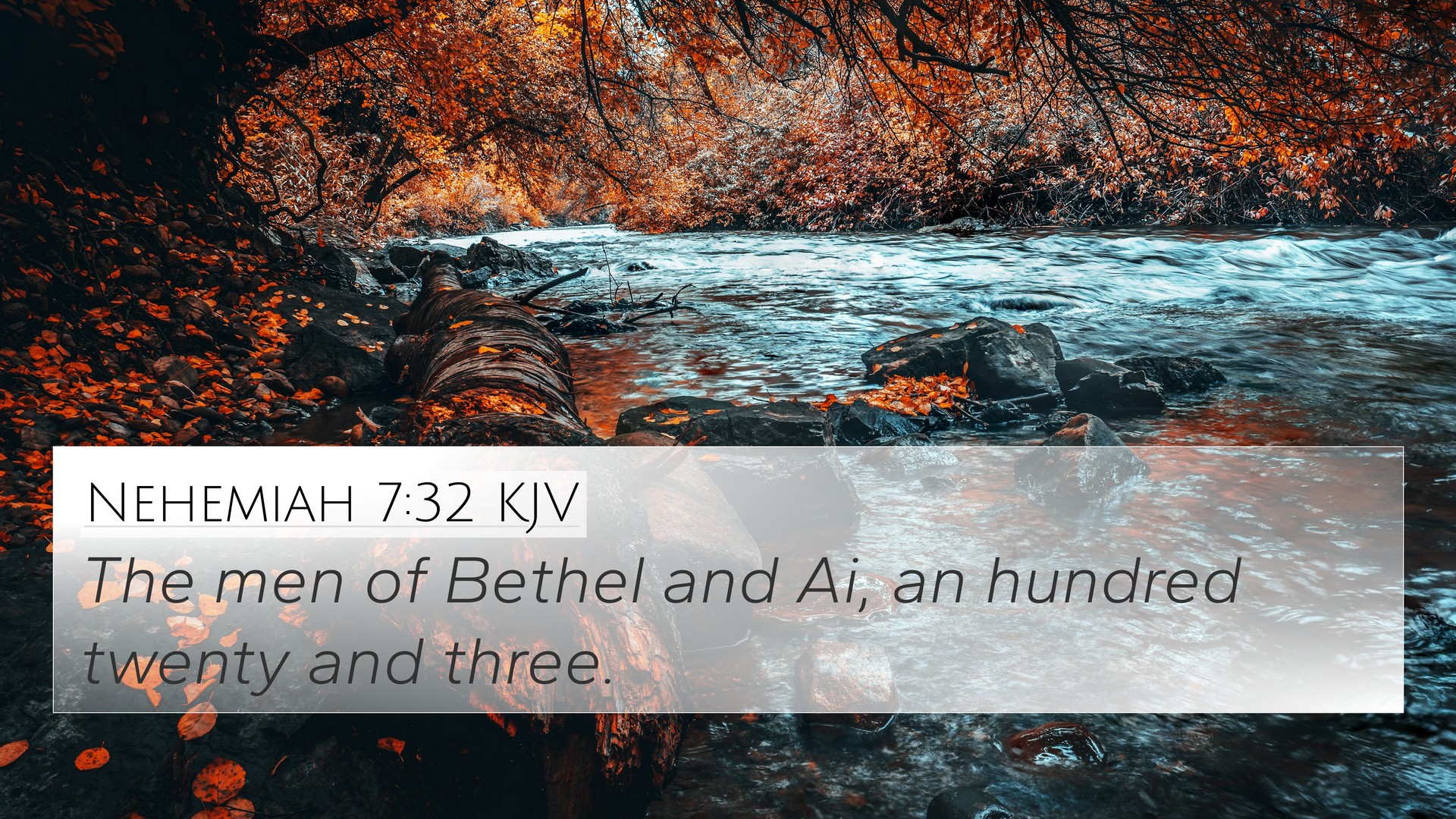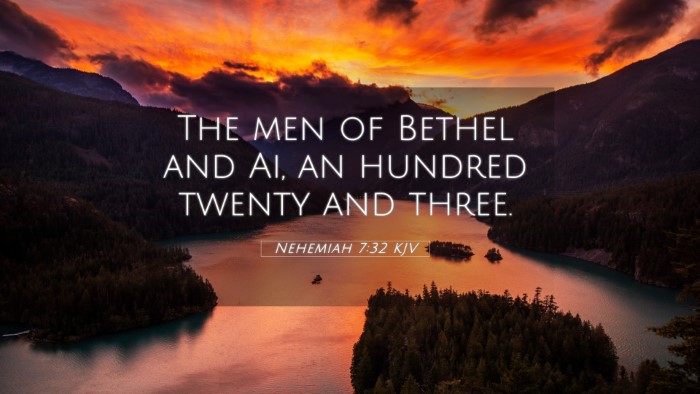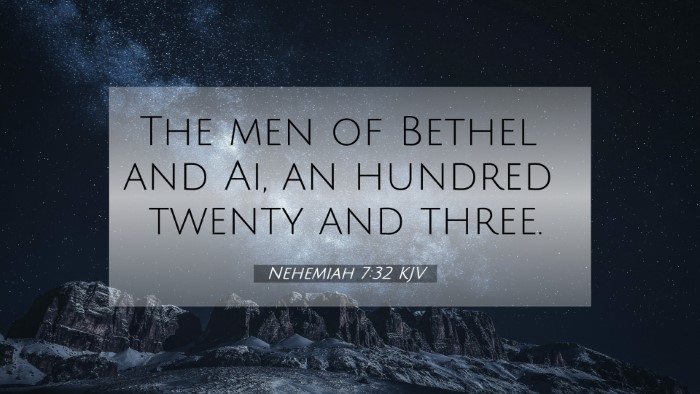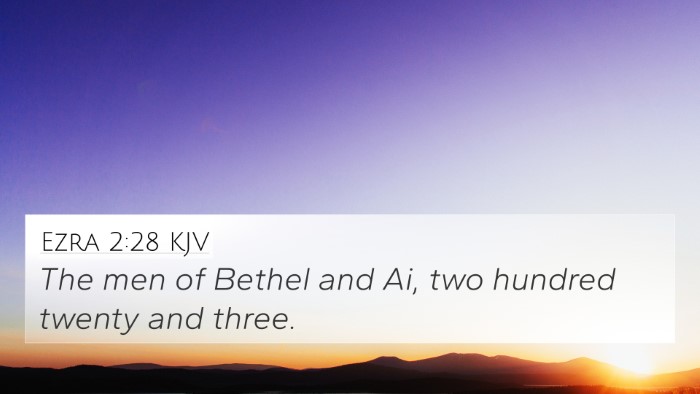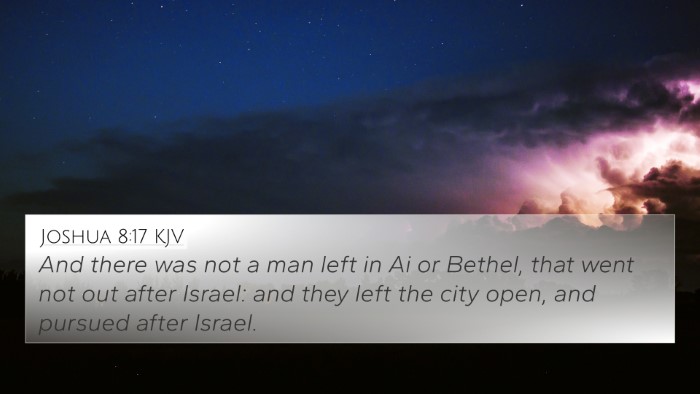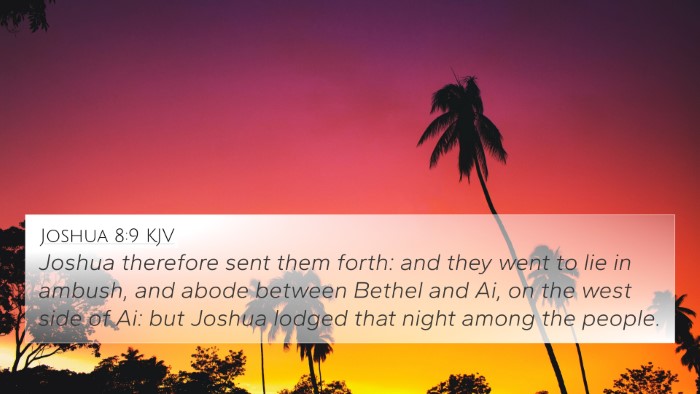Understanding Nehemiah 7:32
Nehemiah 7:32 states: "The men of the other people; the priests, the Levites, the Nethinims, and the children of Solomon’s servants." This verse is part of the broader context of Nehemiah's efforts to restore Jerusalem and its community following the Babylonian exile. In this passage, interrelations between various communities and their roles highlight the importance of unity and collaboration in rebuilding God's city.
Contextual Background
The book of Nehemiah chronicles the return of the Jews from Babylonian captivity and the subsequent rebuilding of Jerusalem's walls and community. Nehemiah's leadership is pivotal as he organizes the people for both physical and spiritual restoration. This verse refers specifically to the identification and enumeration of various groups involved in the repopulation and restoration efforts in Jerusalem.
Verse Analysis and Commentary Insights
- Matthew Henry's Commentary: Henry emphasizes the significance of identifying different groups among the returned exiles, showcasing the diverse makeup of the community. The Levites, for instance, were central to the worship and service of God, while the Nethinims, who were temple servants, held vital roles as well. This illustrates how every individual contributes to the greater purpose of the community.
- Albert Barnes' Notes: Barnes notes that the mention of the "children of Solomon's servants" points to the historical continuity of service in the temple and community. Their inclusion signifies respect for lineage and God's providence in maintaining a faithful remnant throughout Israel's tumultuous history.
- Adam Clarke's Commentary: Clarke highlights the organizational aspect of Nehemiah's work, as he categorized individuals into specific roles. This orderliness underlines the theme of unity in diversity, where each group possesses distinct functions, but all work toward the unified goal of rebuilding Jerusalem.
Thematic Connections Between Bible Verses
This verse can be cross-referenced with other passages that focus on similar themes of community restoration and service:
- Ezra 2:55-58: The initial listing of the "Nethinims" providing background on the temple workers relevant to the restoration efforts reflects continuity in roles.
- Nehemiah 10:28-29: A further commitment by the people to serve God collectively emphasizes communal responsibility.
- 1 Chronicles 9:2: Lists of those serving in the temple serve as a reminder of the importance of proper order in worship.
- Romans 12:4-8: Draws parallels between the unity of the body of Christ and the diverse roles each believer plays in service.
- 1 Peter 2:5: As living stones, believers are called to offer spiritual sacrifices, paralleling the roles specified in Nehemiah's time.
- Acts 6:1-6: The early church's organizational needs mirror Nehemiah's, demonstrating how collective action is crucial in spiritual communities.
- Galatians 6:2: Encouragement to bear one another’s burdens reinforces the idea of cooperative labor in fulfilling God's work.
Relevance and Application
Understanding Nehemiah 7:32 is crucial for reflecting upon how diverse roles contribute to the church and community today. Just as Nehemiah organized the people into distinct groups for specific purposes, modern believers are called to recognize their own gifts and contributions in building God’s kingdom.
This verse invites worshipers to explore how they relate in function and partnership within their community, promoting unity while celebrating diversity.
Conclusion
Nehemiah 7:32 serves as a powerful reminder of the importance of every individual in the work of God. Each group, from priests to Levites to Nethinims, plays a crucial role in restoring Jerusalem, much like each believer contributes to the body of Christ today. By understanding these connections, believers can foster greater unity and effective service in their communities.
Exploring Cross-References
For deeper insight into this verse and its implications, consider utilizing tools for Bible cross-referencing. Accessing a Bible concordance aids in identifying connections within the text. Engaging in cross-reference Bible study can provide clarity on thematic connections and historical significance while identifying pertinent Bible verses that relate to each other.
